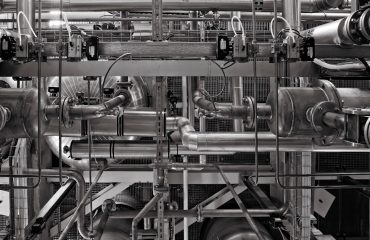The steel industry is the backbone of countless modern structures and technologies. Ensuring the quality, safety, and reliability of steel products is paramount, and this is where the American Society for Testing and Materials (ASTM) standards play a crucial role. ASTM compliance in steel production isn’t just a checklist; it’s a commitment to excellence, guaranteeing consistent performance and minimizing risks.
Understanding ASTM Standards and Their Importance
ASTM International develops and publishes voluntary consensus standards for materials, products, systems, and services. These standards provide detailed specifications for various properties of steel, including chemical composition, mechanical properties (tensile strength, yield strength, elongation, hardness), and dimensional tolerances. Adherence to these standards ensures that steel produced meets predetermined quality levels, regardless of the manufacturer or location. This standardization is essential for interoperability, ensuring different steel components can be used together reliably in complex structures like bridges, buildings, and vehicles.
Compliance with ASTM standards provides several key benefits: increased safety, improved product reliability, enhanced global trade (facilitating acceptance of steel products across international markets), reduced disputes and legal issues, and improved overall efficiency in the manufacturing process. Failure to comply can lead to significant consequences, including structural failures, product recalls, legal liabilities, and reputational damage.
Key ASTM Standards for Steel Production
Numerous ASTM standards govern different types of steel and their applications. Some of the most commonly used standards include:
- ASTM A36: This standard specifies the requirements for structural steel, a widely used grade in construction and general engineering applications. It covers chemical composition, tensile properties, and bend test requirements.
- ASTM A572: This standard covers high-strength low-alloy structural steel, offering superior strength compared to A36 steel. It’s often used in demanding applications requiring higher load-bearing capacity.
- ASTM A992: This covers the specifications for high-strength low-alloy structural steel, specifically designed for use in building construction.
- ASTM A672: This standard outlines the requirements for high-strength low-alloy steel plates for pressure vessels, demanding stringent quality control during manufacturing.
- ASTM E8/E8M: This standard details the methods for conducting tensile testing of metallic materials, a fundamental test for assessing the mechanical properties of steel.
Choosing the appropriate ASTM standard is crucial depending on the intended application of the steel. Using the wrong grade can compromise the structural integrity of the final product.
The Role of Quality Control and Testing in ASTM Compliance
Achieving ASTM compliance necessitates a robust quality control (QC) system throughout the steel production process. This involves rigorous testing at various stages, from raw material inspection to finished product verification. Key aspects of QC include:
- Chemical Composition Analysis: Spectrometric analysis ensures the steel meets the specified chemical composition outlined in the relevant ASTM standard.
- Mechanical Testing: Tensile testing (ASTM E8/E8M), impact testing (Charpy or Izod), and hardness testing are performed to verify the mechanical properties of the steel.
- Dimensional Inspection: Verifying that the steel meets the specified dimensions and tolerances is crucial for proper fit and function.
- Non-Destructive Testing (NDT): Methods like ultrasonic testing, magnetic particle inspection, and radiographic testing are used to detect internal flaws without damaging the material.
- Documentation and Traceability: Maintaining detailed records of all testing and inspection procedures is essential for demonstrating compliance and traceability.
Accurate and reliable testing is paramount in ensuring that the produced steel conforms to the specified ASTM standard. Any deviation requires corrective actions and thorough investigation.
Consequences of Non-Compliance and Best Practices
Failure to comply with ASTM standards can have severe consequences, ranging from economic losses to safety hazards. Non-compliance can lead to:
- Product Recalls: If a defect is discovered that compromises safety, a product recall may be necessary, resulting in significant financial losses.
- Legal Liabilities: Non-compliance can expose manufacturers to lawsuits and legal action if their products cause damage or injury.
- Reputational Damage: A loss of trust and credibility can severely impact a company’s reputation and future business.
- Market Access Restrictions: Many countries and regions have regulations requiring compliance with ASTM or equivalent standards for importing steel products.
Best practices for ensuring ASTM compliance include investing in advanced testing equipment, employing skilled personnel, implementing a rigorous QC system, and maintaining meticulous documentation. Proactive measures like regular audits and continuous improvement initiatives are crucial for maintaining consistent compliance.
The Future of ASTM Compliance in Steel Production
The steel industry is constantly evolving, with new technologies and materials emerging. ASTM standards must adapt to these changes to remain relevant and effective. The future of ASTM compliance will likely involve:
- Increased use of advanced testing techniques: More sophisticated NDT methods and data analytics will improve the efficiency and accuracy of quality control.
- Development of standards for new steel grades: As new types of steel with enhanced properties are developed, new ASTM standards will be necessary to define their specifications.
- Greater emphasis on sustainability: ASTM standards will increasingly incorporate considerations for environmental impact and sustainable manufacturing practices.
- Digitalization and automation: The integration of digital technologies and automation in steel production will enhance traceability and efficiency in ensuring compliance.
Staying abreast of the latest ASTM standards and technological advancements is essential for steel manufacturers to remain competitive and ensure the production of high-quality, safe, and reliable steel products.
Tags: ASTM, ASTM compliance, steel production, steel standards, quality control




